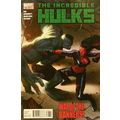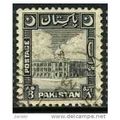Halifax, Nova Scotia - harbour - art postcard by Jackson (Tate Gallery c.1950s)
- Condition : Used
- Dispatch : 2 Days
- Brand : None
- ID# : 211121048
- Quantity : 1 item
- Views : 151
- Location : United Kingdom

- Seller : justthebook (+1703)
- Barcode : None
- Start : Fri 07 Oct 2022 10:26:33 (EDT)
- Close : Run Until Sold
- Remain : Run Until Sold
Checks/Cheques
 for 1 item(s) edit
for 1 item(s) edit
Shipping Calculator
More Listings from This Seller view all
Seller's Description
- Postcard
- Picture / Image: Entrance to Halifax Harbour [Nova Scotia, Canada] by A. Y. Jackson [must be Alexander Young Jackson, a famous Canadian painter]
- Publisher: Tate Gallery, London [I think this would have been late 1940s or 1950s] / printed by Waterlow
- Postally used: no
- Stamp: n/a
- Postmark(s): n/a
- Sent to: n/a
- Notes / condition: slight foxing on back
Please ask if you need any other information and I will do the best I can to answer.
Image may be low res for illustrative purposes - if you need a higher definition image then please contact me and I may be able to send one. No cards have been trimmed (unless stated).
------------------------------------------------
Postage & Packing:
Postage and packing charge should be showing for your location (contact if not sure).
No additional charges for more than one postcard. You can buy as many postcards from me as you like and you will just pay the fee above once. Please wait for combined invoice. (If buying postcards with other things such as books, please contact or wait for invoice before paying).
Payment Methods:
UK and all other locations - PayPal or other methods listed above.
NOTE: All postcards are sent in brand new stiffened envelopes which I have bought for the task. These are specially made to protect postcards and you may be able to re-use them.
I will give a full refund if you are not fully satisfied with the postcard.
----------------------------------------------
Text from the free encyclopedia WIKIPEDIA may appear below to give a little background information (internal links may not work) :
*************
Halifax, officially known as the Halifax Regional Municipality (HRM), is the capital of the Canadian province of Nova Scotia. It had a population of 403,131 in 2016, with 316,701 in the urban area centred on Halifax Harbour.[6][7] As of July 2020, Statistics Canada estimated the population of the CMA at 448,544.[8] The regional municipality consists of four former municipalities that were amalgamated in 1996: Halifax, Dartmouth, Bedford, and Halifax County.
Halifax is a major economic centre in Atlantic Canada, with a large concentration of government services and private sector companies. Major employers and economic generators include the Department of National Defence, Dalhousie University, Nova Scotia Health Authority, Saint Mary's University, the Halifax Shipyard, various levels of government, and the Port of Halifax. Agriculture, fishing, mining, forestry, and natural gas extraction are major resource industries found in the rural areas of the municipality.
Alexander Young Jackson CC CMG RCA (October 3, 1882 – April 5, 1974) was a Canadian painter and a founding member of the Group of Seven. Jackson made a significant contribution to the development of art in Canada, and was successful in bringing together the artists of Montreal and Toronto.[1] He exhibited with the Group of Seven from 1920. In addition to his work with the Group of Seven, his long career included serving as a War Artist during World War I (1917–19) and teaching at the Banff School of Fine Arts, from 1943 to 1949. In his later years he was artist-in-residence at the McMichael Canadian Art Collection in Kleinburg, Ontario.[2]
Jackson was born in Montreal, the son of Eliza Georgina (Young) and Henry Allen Jackson.[3] As a young boy, Jackson worked as an office boy for a lithograph company, after his father abandoned his family of six children. It was at this company that Jackson began his art training. In the evenings, he took classes at the Art Association of Montreal (1902).[4]
In 1905, Jackson worked his way to Europe on a cattle boat, returning by the same means and travelling on to Chicago. In Chicago, he joined a commercial art firm and took courses at the Chicago Art Institute.[4] He saved his earnings and, by 1907, was able to visit France to study Impressionism. In France, Jackson decided to become a professional painter, studying at Paris' Académie Julian[1] under J. P. Laurens. Some of his most important artistic development was at the Étaples art colony, which he first visited in 1908 with his New Zealand friend Eric Spencer Macky (1880–1958). Jackson painted his Paysage Embrumé then and, to his surprise, it was accepted by the Paris Salon.[4]:30 Returning in 1912, he stayed with the Australian Arthur Baker-Clack (1877–1955). From this period date the Impressionist Sand dunes at Cucq[5] and Autumn in Picardy,[6] which was bought by the National Gallery of Canada the following year.
When Jackson returned to Canada, he settled in Sweetsburg, Quebec, where he began painting works such as the Impressionistic Edge of the Maple Wood. He held his first exhibition at the Art Association of Montreal with Randolph Hewton in 1913. Unable to make ends meet and discouraged by the Canadian art scene, he considered moving to the United States. However, he received a letter from J. E. H. MacDonald which changed his mind. MacDonald inquired about the Edge of the Maple Wood, which he had seen at a Toronto art show, informing Jackson that Toronto artist Lawren Harris wanted to purchase the painting if he still owned it.[7]
After the purchase, Jackson struck up a correspondence with the two Toronto artists, often debating on topics related to Canadian art. Jackson soon began visiting Toronto. Dr. James MacCallum convinced Jackson to relocate to Toronto by offering to buy enough of his paintings for one year to guarantee him a living income.[8]:24 He moved into the Studio Building which was financed by Lawren Harris and Dr. James MacCallum. Harris, overseeing construction of the building, was too busy to concentrate on his own artistic endeavours and loaned his own studio space, over the Commerce Bank branch at the northwest corner of Yonge and Bloor streets, to the newly arrived Montrealer, A. Y. Jackson. The spot is now occupied by the 34-storey 2 Bloor West. Jackson was a welcome addition to the Toronto art scene, having traveled in Europe and bringing with him a respected – though as yet not particularly successful – talent. The canvas taking shape while he waited to move into the Studio Building, Terre Sauvage, became one of his most famous. In January 1914 the Studio Building was ready for occupation. Tom Thomson was another of the first residents of the building and shared a studio with Jackson for a year.[8]:24[9] Like the other Group of Seven painters, Jackson embraced landscape themes and sought to develop a bold style. An avid outdoorsman, Jackson became good friends with Tom Thomson, and the duo often fished and sketched together, beginning with a trip to Algonquin Park in fall 1914.[8]:25 Inspired by Thomson, Jackson and the other painters who would one day be known as the Group of Seven undertook trips to Algonquin Park, Georgian Bay, Algoma and the North Shore.[10]
With the outbreak of World War I, Jackson enlisted in the Canadian Army's 60th battalion in 1915. Soon after he reached the front he was wounded at the Battle of Sanctuary Wood in June 1916 and found himself once more at Étaples in the hospital there.[11] While recovering from his injuries, he came to the attention of Lord Beaverbrook.[12]:46 He was then transferred to the Canadian War Records branch as an artist. Here, Jackson would create important pictures of events connected with the war.[13][14] He later worked for the Canadian War Memorials as an official war artist from 1917 to 1919.[15]
On his return from WWI, Jackson again took up residence at the Studio Building. He removed Tom Thomson's easel, made by Thomson's own hand, from his studio and used it for all the subsequent pictures he produced in the Studio Building. Shortly after he returned from wintering on Georgian Bay, he learned that in his absence he had been included in an informal group of Studio Building artists, exhibiting for the first time, called the Group of Seven.[9]
The Beaver Hall Group was formed in Montreal in May 1920 with A. Y. Jackson as president. In his opening speech, Jackson emphasized the right of the artist to paint what they feel "with utter disregard for what has hitherto been considered requisite to the acceptance of the work at the recognized art exhibitions in Canadian centres. "Schools and 'isms' do not trouble us", he maintained, "individual expression is our chief concern".[16] He identified its goals as being those of the Group of Seven, and over the years Jackson maintained the contact between Toronto and Montreal, supporting and stimulating the Montreal artists through regular visits, painting with artists such as Albert H. Robinson and others at various scenic locations, and correspondence. He kept them informed of events in Toronto and arranged for their works to be included in the Group of Seven exhibitions.[17] It is through this kind of contact that he made lifelong friends of Beaver Hall artists Anne Savage, Sarah Robertson and Kathleen Morris.[16]
In 1932, Jackson depicted the Falconbridge smelter near Sudbury, in his painting Smoke Fantasy. He then began efforts at government lobbying, pleading in a letter to the minister of Lands and Forests William Finlayson to preserve from logging what became Killarney Provincial Park and Trout Lake. The latter was renamed O.S.A. Lake in honour of the Ontario Society of Artists which had taken it into trust. Jackson's efforts were rewarded with the naming of a lake after him on his 90th birthday.[18]
In 1938, Jackson visited the mine-site of the isolated Radium mine at Port Radium, Northwest Territories, in 1938.[19] Jackson was a friend of prospector Gilbert LaBine, then the mine manager, and flew to the site with him, where he painted Radium Mine.[20]
Jackson left the Studio Building in 1955 with Lawren Harris mourning, in a letter from Vancouver, "Your moving from the Studio Building marks the end of an era, the one era of creative art that has the greatest significance for Canada... You were the real force and inspiration that led all of us into a modern conception that suited this country, and the last to leave the home base of operations."[9]
Listing Information
| Listing Type | Gallery Listing |
| Listing ID# | 211121048 |
| Start Time | Fri 07 Oct 2022 10:26:33 (EDT) |
| Close Time | Run Until Sold |
| Starting Bid | Fixed Price (no bidding) |
| Item Condition | Used |
| Bids | 0 |
| Views | 151 |
| Dispatch Time | 2 Days |
| Quantity | 1 |
| Location | United Kingdom |
| Auto Extend | No |













